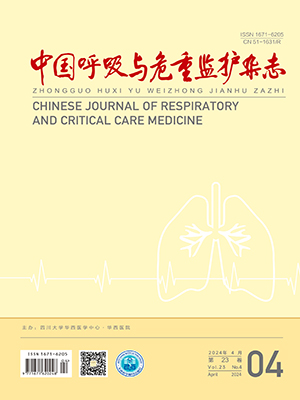| 1. |
Lindberg E, Gislason T. Epidemiology of sleep-related obstructive breathing. Sleep Med Rev, 2000, 4(5): 411-433.
|
| 2. |
Uyar M, Davutoglu V. Obstructive sleep apnoea: a stand-alone risk factor for chronic kidney disease. Nephrol Dial Transplant, 2011, 26(8): 2718; author reply 2718-2719.
|
| 3. |
Chhunchha B, Fatma N, Kubo E, et al. Curcumin abates hypoxia-induced oxidative stress based-ER stress-mediated cell death in mouse hippocampal cells (HT22) by controlling Prdx6 and NF-kappaB regulation. Am J Physiol Cell Physiol, 2013, 304(7): C636-655.
|
| 4. |
Chen X, Kintner DB, Luo J, et al. Endoplasmic reticulum Ca2+ dysregulation and endoplasmic reticulum stress following in vitro neuronal ischemia: role of Na+-K+-Cl-cotransporter. J Neurochem, 2008, 106(4): 1563-1576.
|
| 5. |
Chen S, He FF, Wang H, et al. Calcium entry via TRPC6 mediates albumin overload-induced endoplasmic reticulum stress and apoptosis in podocytes. Cell Calcium, 2011, 50(6): 523-529.
|
| 6. |
Lim JC, Lim SK, Park MJ, et al. Cannabinoid receptor 1 mediates high glucose-induced apoptosis via endoplasmic reticulum stress in primary cultured rat mesangial cells. Am J Physiol Renal Physiol, 2011, 301(1): F179-188.
|
| 7. |
Chiang CK, Hsu SP, Wu CT, et al. Endoplasmic reticulum stress implicated in the development of renal fibrosis. Mol Med, 2011, 17(11-12): 1295-1305.
|
| 8. |
Wiart C. Comment on " The endoplasmic reticulum stress response is involved in apoptosis induced by aloe-emodin in HK-2 cells by Zhu et al. (2012). Food Chem Toxicol, 2013, 51: 458.
|
| 9. |
Maclean KN, Greiner LS, Evans JR, et al. Cystathionine protects against endoplasmic reticulum stress-induced lipid accumulation, tissue injury, and apoptotic cell death. J Biol Chem, 2012, 287(38): 31994-32005.
|
| 10. |
丁巍. 内质网应激在肾小管上皮细胞凋亡中的作用及机制研究 [D];复旦大学, 2012.
|
| 11. |
Wang H, Tian JL, Feng SZ, et al. The organ specificity in pathological damage of chronic intermittent hypoxia: an experimental study on rat with high-fat diet. Sleep Breath, 2013, 17(3): 957-965.
|
| 12. |
刘蔚, 唐继海, 李峥嵘, 等 Cys-c、hs-CRP 和尿微量白蛋白在糖尿病患者肾功能早期损伤中的诊断价值. 中国实验诊断学, 2012, 16(12): 2260-2262.
|
| 13. |
余勤, 汪小亚, 岳红梅, 等. 血清胱蛋白酶抑制剂 C 及尿酶对阻塞性睡眠呼吸暂停低通气综合征早期肾功能损害的诊断价值. 兰州大学学报(医学版), 2008, 34(1): 13-16.
|
| 14. |
夏秋萍, 陈建荣, 蔡映云, 等. OSAHS 患者血清 8-isoPG、LTB4、TNF-α、IL-10 和 Hs-CRP 检测的临床意义. 中国呼吸与危重监护杂志, 2009, 8(3): 262-266.
|
| 15. |
寇育乐, 张盼盼, 王红阳, 等. 血管紧张素Ⅱ与氧化应激对慢性间歇低氧大鼠肺组织损伤的影响. 中华结核和呼吸杂志, 2015, 38(0): 612-616.
|
| 16. |
李庆云. 慢性间歇低氧与氧化应激. 中华结核和呼吸杂志, 2008, 31(9): 646-647.
|
| 17. |
Munoz-Garcia B, Moreno JA, Lopez-Franco O, et al. Tumor necrosis factor-like weak inducer of apoptosis (TWEAK) enhances vascular and renal damage induced by hyperlipidemic diet in ApoE-knockout mice. Arterioscler Thromb Vasc Biol, 2009, 29(12): 2061-2068.
|
| 18. |
Zhang R, Yu Y, Deng J, et al. Sesamin ameliorates high-fat diet-induced dyslipidemia and kidney injury by reducing oxidative stress. Nutrients, 2016, 8(5):.
|
| 19. |
Osipov RM, Bianchi C, Feng J, et al. Effect of hypercholesterolemia on myocardial necrosis and apoptosis in the setting of ischemia-reperfusion. Circulation, 2009, 120(11 Suppl): S22-30.
|
| 20. |
Minville-Walz M, Gresti J, Pichon L, et al. Distinct regulation of stearoyl-CoA desaturase 1 gene expression by cis and trans C18: 1 fatty acids in human aortic smooth muscle cells. Genes Nutr, 2012, 7(2): 209-216.
|
| 21. |
石志辉, 徐麟皓, 周锐. 牛磺熊去氧胆酸钠抑制小鼠间歇性低氧模型肺组织中内质网应激的激活. 中南大学学报: 医学版, 2015, 40(11): 1165-1172.
|
| 22. |
Shin C, Kim JK, Kim JH, et al. Increased cell-free DNA concentrations in patients with obstructive sleep apnea. Psychiatry Clin Neurosci, 2008, 62(6): 721-727.
|
| 23. |
郝敏, 贾雪梅, 汪渊, 等. 高脂饮食大鼠肾组织中细胞凋亡及 Bcl-2 和 Bax 的表达. 安徽医科大学学报, 2009, (2): 191-194.
|
| 24. |
邱艳丽, 李巧稚, 郑亚琴, 等. 内质网应激与氧化应激: 恶性循环还是双刃剑?. 实用药物与临床, 2016, 19(8): 1037-1041.
|
| 25. |
Hetz C, Chevet E, Harding HP. Targeting the unfolded protein response in disease. Nat Rev Drug Discov, 2013, 12(9): 703-719.
|
| 26. |
Wang S, Kaufman RJ. The impact of the unfolded protein response on human disease. J Cell Biol, 2012, 197(7): 857-867.
|
| 27. |
Xu LH, Xie H, Shi ZH, et al. Critical role of endoplasmic reticulum stress in chronic intermittent hypoxia-induced deficits in synaptic plasticity and long-term memory. Antioxid Redox Signal, 2015, 23(9): 695-710.
|
| 28. |
Cai XH, Li XC, Jin SW, et al. Endoplasmic reticulum stress plays critical role in brain damage after chronic intermittent hypoxia in growing rats. Exp Neurol, 2014, 257: 148-156.
|
| 29. |
Sanchez AM, Martinez-Botas J, Malagarie-Cazenave S, et al. Induction of the endoplasmic reticulum stress protein GADD153/CHOP by capsaicin in prostate PC-3 cells: a microarray study. Biochem Biophys Res Commun, 2008, 372(4): 785-791.
|




